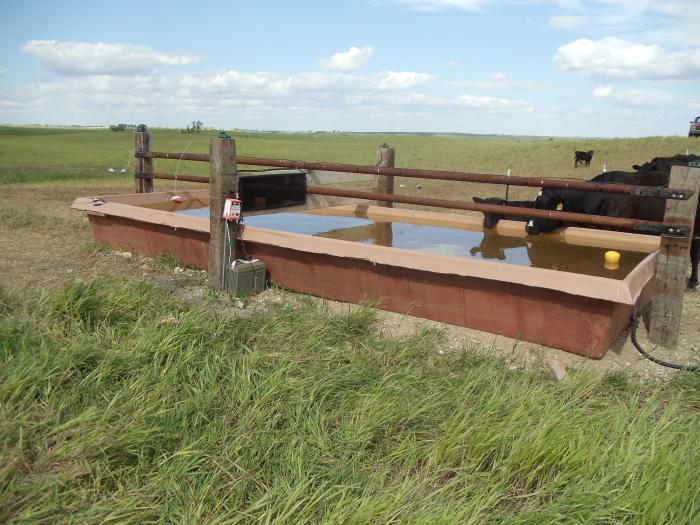Always Changing in McLean County
"The learning curve in agriculture is constant,” says Myron Lick, who starting farming and ranching 48 years ago.
Kindra Gordon writes from Whitewood, S.D.

Lick, who operates Ruso Ranch near Ruso, N.D., with wife, Georgean, and daughter and son-in-law, Nick and Farrah Faulkner, has been willing to adapt and change their operation over the decades. The addition of conservation practices were ultimately key to the ranch still being operated today, he says.
“I don’t know that there was a time when I wasn’t interested in conservation,” he says.
But he credits the South McLean County Soil Conservation District (SCD), the Natural Resources Conservation Service (NRCS) and other conservation and wildlife entities for being partners in fostering conservation ideas, technical assistance and funding to benefit the land – and those living on the land.
As an example, Lick recalls the South McLean County SCD establishing no-till demonstration plots in the county in the 1970s. “I followed that over the years, and we began doing some testing on our operation with a Haybuster no-till drill…and by 1987 bought an air seeder. Those practices helped us save fuel and we were saving moisture in the field. The years 1988 through 1990 were some of the driest periods I ever remember.”
But by the year 2000, Lick was forced to change again, as their average annual rainfall of 14 inches more than doubled, with 36 inches of rainfall in 2000, and more than 30 inches of rainfall for the next few years.
“Everything I had learned from the dry years was no longer useful,” Lick says.
The wet years were detrimental to the land, causing saline seeps and salinity in the soil. Through conversations with NRCS staff and participation in holistic programs and grazing conferences “I decided I needed to change and do things differently,” Lick says. “We had always run some cattle, and I realized we could raise more grass and livestock.”
Lick says he had a “complete paradigm shift.” Working with NRCS through an Environmental Quality Incentives Program and Conservation Stewardship Program contracts, Lick and his family converted over 1,000 acres of their water-logged cropland to permanent grass pastures; they also added cross-fencing and water developments and transitioned existing cropland to cover crops for forage. With those resources in place they increased their cow herd size and added yearlings to the operation, which allows flexibility to increase or decrease stocking rate based on the available forage for that growing season. A short duration rotational grazing system is utilized, and the increase in livestock numbers has opened the doors to opportunities for the direct marketing of Ruso Ranch-raised beef.
“I knew that we had to make a change [from grain farming],” Lick says. “Those were not very profitable years, and if we didn’t change we weren’t going to be able to continue to operate.”
David Hendrickson, NRCS District Conservationist for the Turtle Lake Field Office, credits the Lick family for being one of the most conservation-minded families in their soil conservation district.
“From their early cropland management changes to reduce soil erosion and save moisture to their more recent conversion to grassland-based agriculture, the Lick family has always worked towards a more holistic-style of land conservation. Myron is often sought out for rotational grazing information by other producers and always willing to discuss how the changes to their farming and ranching operation has improved their family life.”
“Going to a grass-based operation has done amazing things for our soil,” Lick says. “We’ve learned how to better manage grass. But we don’t know all the answers yet. It’s a dynamic system that’s always changing.”

